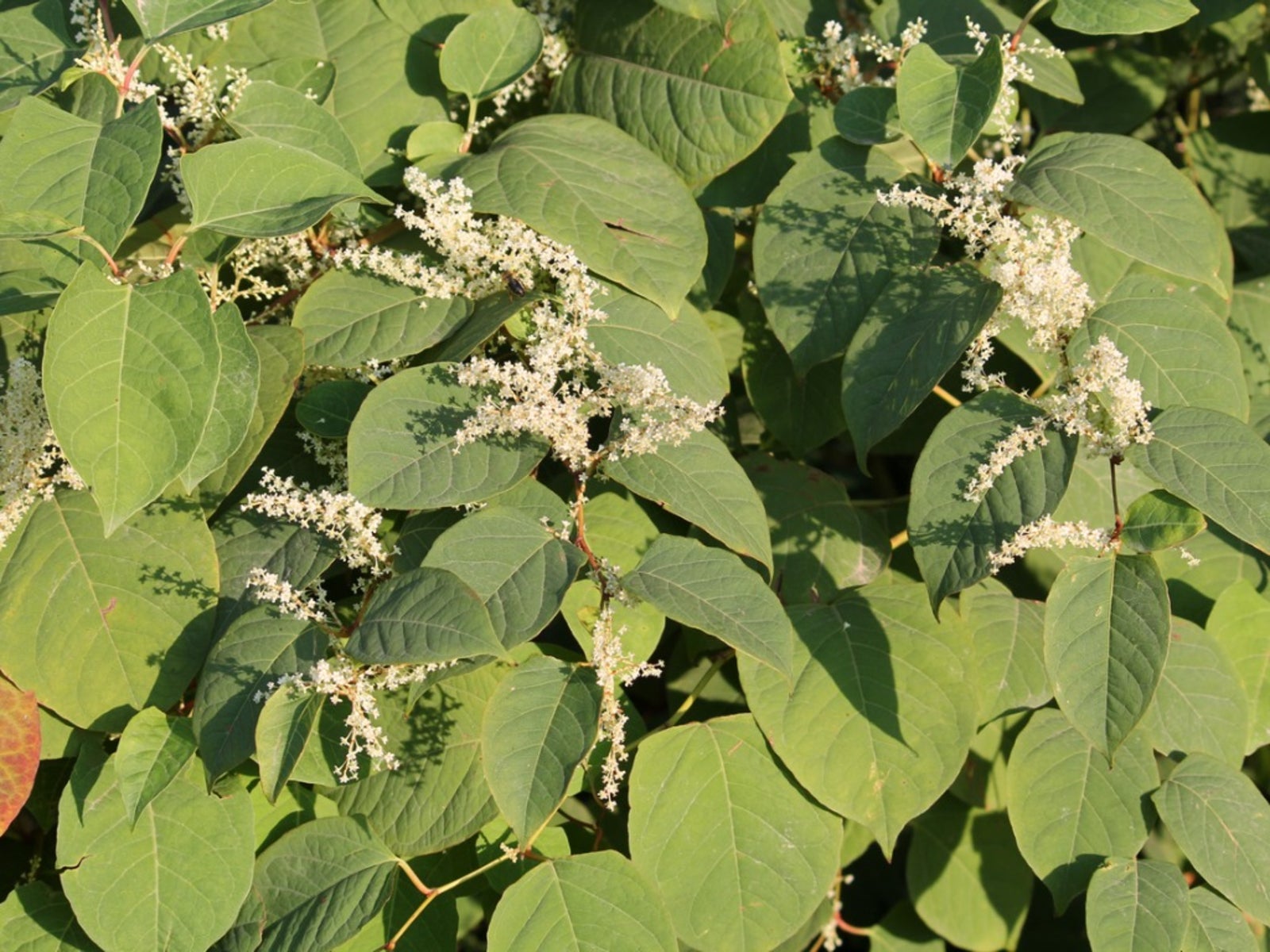Controlling Japanese Knotweed - Get Rid Of Japanese Knotweed


Though Japanese knotweed plant looks like bamboo (and is sometimes referred to as American bamboo, Japanese bamboo, or Mexican bamboo), it is not a bamboo. While it may not be a true bamboo, it still acts like bamboo. Japanese knotweed can be very invasive. It is also like bamboo in that control methods for Japanese knotweed are almost the same as for controlling bamboo. If Japanese knotwood has taken over a part of your yard, keep reading to learn more about how to kill Japanese knotweed.
Japanese Knotweed Identification
The Japanese knotweed plant (Fallopia japonica) tends to grow in clumps and can grow up to 13 feet (4 m.) tall in the right conditions, but is often smaller than this. The leaves are heart shaped and about the size of your hand, with a red vein running down their center. Japanese knotweed stems are the easiest to identify, as they also give it its name. The stems are hollow and have “knots” or joints every few inches (8 cm.). Japanese knotweed flowers grow at the top of the plants, are cream colored, and grow straight up. They are about 6 to 8 inches (15-20 cm.) tall. Japanese knotweed plant grows best in damp areas, but will grow anywhere that their roots can find soil.
How to Get Rid of Japanese Knotweed
Japanese knotweed plant spreads by rhizomes under the ground. It is because of this, killing Japanese knotweed is a slow process and you must be diligent and persistent if you are to be successful. The most common method for how to kill Japanese knotweed is using a non-selective herbicide. You will need to use it undiluted or at least at a high concentration on this weed. Remember that this is a tough plant and one application of herbicide will not kill Japanese knotweed, but will only weaken it. The idea is to spray it repeatedly until the plant uses up all of its energy reserves while trying to regrow repeatedly. You can also try calling your local city hall or extension service for advice. Due to the highly invasive nature of this plant, some areas will provide free spraying of Japanese knotweed. Another control method for Japanese knotweed is mowing. Chopping down the plants every few weeks will start to eat away at the plant's energy reserves as well. Another way to get rid of Japanese knotweed is to dig it out. You will want to dig out as much of the roots and rhizomes as possible. Japanese knotweed can and will regrow from any rhizomes left in the ground. No matter how well you dig up the roots, there is a good chance you will miss some of the rhizomes, so you will need to watch for it to start re-growing and dig it out again. The most effective Japanese knotweed control is to combine methods. For example, mowing and then spraying weed killer will make your efforts at killing Japanese knotweed twice as effective. Note: Chemical control should only be used as a last resort, as organic approaches are safer and much more environmentally friendly.
Sign up for the Gardening Know How newsletter today and receive a free copy of our e-book "How to Grow Delicious Tomatoes".

Heather Rhoades founded Gardening Know How in 2007. She holds degrees from Cleveland State University and Northern Kentucky University. She is an avid gardener with a passion for community, and is a recipient of the Master Gardeners of Ohio Lifetime Achievement Award.